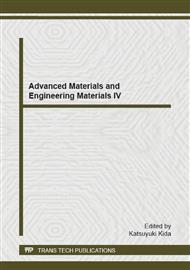p.309
p.315
p.319
p.323
p.327
p.332
p.336
p.340
p.344
Application of Different Conductive Substrate Materials for Heat Transfer Enhancement in Cooling of Electronic Components
Abstract:
In this research, a study of the heat transfer enhancement in electronic components mounted in channels was conducted by using different materials in the conductive substrate. In this context, a numerical analysis was performed to investigate the cooling of 3D protruding heaters mounted on the bottom wall (substrate) of a horizontal rectangular channel using the ANSYS/FluentTM 15.0 software. Three different materials of the conductive substrate were analyzed, polymethyl methacrylate (PMMA), fiberglass reinforced epoxy laminate (FR4), and pure aluminum (Al). Uniform heat generation rate was considered for the protruding heaters and the cooling process happened through a steady laminar airflow, with constant properties. The fluid flow velocity and temperature profiles were uniform at the channel entrance. For the adiabatic substrate, the cooling process occurred exclusively by forced convection. For the conductive substrate, the cooling process was characterized by conjugate forced convection-conduction heat transfer through two mechanisms; one directly between the heaters surfaces and the flow by forced convection, and the other through conduction at the interfaces heater-substrate in addition to forced convection from the substrate to the fluid flow at the substrate surface. The governing equations and boundary conditions were numerically solved through a coupled procedure using the Control Volumes Method in a single domain comprising the solid and fluid regions. Commonly used properties in cooling of electronics components mounted in a PCB and typical geometry dimensions were utilized in the results acquisition. Some examples were presented, indicating the dependence of the substrate thermal conductivity related to the Reynolds number on the heat transfer enhancement. Thus, resulting in a lower work temperature at the electronic components.
Info:
Periodical:
Pages:
327-331
Citation:
Online since:
December 2014
Price:
Сopyright:
© 2015 Trans Tech Publications Ltd. All Rights Reserved
Share:
Citation:


